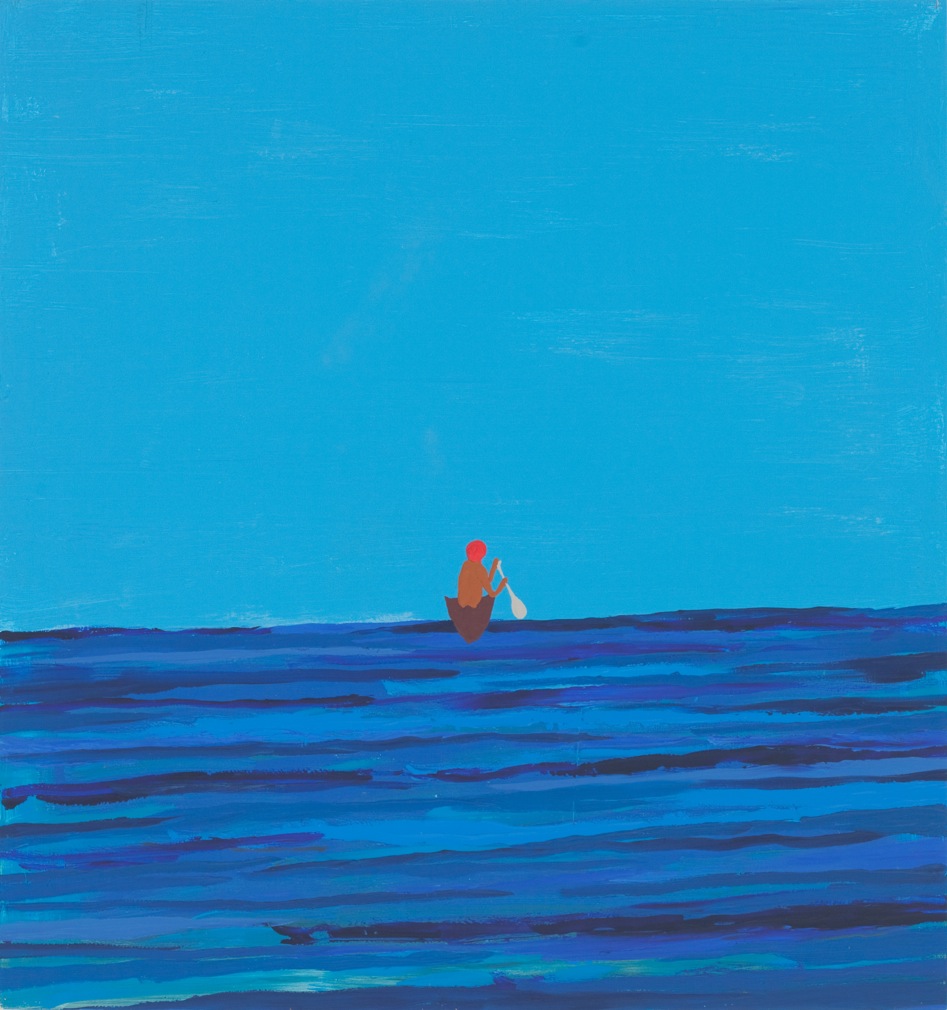Eraser
2014 - Film & Video (Film & Video)
Will Rogan
Will Rogan’s video Eraser (2014) shows a hearse parked in a clearing amidst leaf barren trees. The steely grey sky stands in stark contrast to the vehicle’s luminously pristine white finish and makes this already deathly object seem even more ghostly. The grass underneath is half-turned brown and further marks this as a lifeless landscape. Suddenly, however, a flash begins to emerge from the front tire, illuminating the ground with a fiery glow. As it begins to radiate, the flash slowly spreads across the hood and the windows until the car begins to buckle, smoke creeping up in columns across the sky. As the door juts off the body, we begin to realize that we’re witnessing an explosion in slow motion, total destruction rendered almost balletic through a poetic stretching of time. Shot with a technically advanced camera that shoots 6,900 frames per second, Eraser expands four seconds of “real” time into a nearly six minute duration in which we witness a slow but absolute annihilation. By slowing down the video’s pace to a near crawl, Rogan’s work could be seen as a deliberate resistance to mortality, as if he could actually forestall or delay death in defying the rules of time. At the same time, he employs a wry visual humor that relishes in absurdity in which the exploding hearse becomes an over-the-top funeral pyre and a clear example of “overkill.” In gesturing towards a darkly comic ars moriendi, Eraser fits alongside other humorous narratives about death such as the 1971 Hal Ashby film Harold and Maude , which also ends with a scene of a similarly demolished hearse. But just as that film ends with the promise of hopeful next chapters, Rogan’s video also offers the strange but meditative possibility of regenerative beginnings. Screened on a continuous loop, Rogan signals that it is impossible to escape reminders of our mortality, and just as the explosion finishes, the hearse appears again, seemingly untouched. But if death is ultimately inescapable, Rogan also reveals the beauty in clearing away its reminders and beginning again out of fire and smoke.
Based in the San Francisco Bay Area, Will Rogan’s practice reflects the poignant, the ironic, the disastrous, and the beautiful in his surrounding urban and domestic landscapes. In the form of photography, video, and sculpture, his interventions often highlight the profound and analytical in everyday life. Taking a playful stance on mundane situations and structures, Rogan’s work merges the critical with the poetic. He is also the co-editor and founder of the quarterly journal of editions, The Thing .
Colors:
Related artist(s) to: Will Rogan » Amy Franceschini, » Andrea Higgins, » Chris Johanson, » Colter Jacobsen, » Desirée Holman, » John Bankston, » Jordan Kantor, » Josephine Taylor, » Kamau Amu Patton, » Kota Ezawa

© » KADIST
Desiree Holman
2010Reborn, 2010 is a three-channel video by Desiree Holman that questions ideas of motherhood and the maternal instinct...

© » KADIST
Jordan Kantor
2009Eclipse is a series of screenprints from Jordan Kantor’s larger vitrine installation that included reworkings of a single image of a small group viewing an eclipse through shielding cut-outs...

© » KADIST
Kamau Amu Patton
2011Kamau Amu Patton’s painting Static Field I originates from a system of electronic and digital media...

© » KADIST
Kota Ezawa
2017The Crime of Art is an animation by Kota Ezawa that appropriates scenes from various popular Hollywood films featuring the theft of artworks: a Monet painting in The Thomas Crown Affair (1999), a Rembrandt in Entrapment (1999), a Cellini in How to Steal a Million (1966), and an emerald encrusted dagger in Topkapi (1964)...

© » KADIST
Colter Jacobsen
2007Victory at Sea is a simple mechanism made from cardboard and found materials that mimics the Phenakistoscope, an early cinematic apparatus...

© » KADIST
Kota Ezawa
2014Paint and Unpaint is an animation by Kota Ezawa based on a scene from a popular 1951 film by Hans Namuth featuring Jackson Pollock...

© » KADIST
Kota Ezawa
2002The Simpson Verdict is a three-minute animation by Kota Ezawa that portrays the reading of the verdict during the OJ Simpson trial, known as the “most publicized” criminal trial in history...

© » KADIST
Colter Jacobsen
2010The title Untitled Passport II was first used by Felix Gonzalez-Torres in an unlimited edition of small booklets, each containing sequenced photographs of a soaring bird against an open sky...

© » KADIST
Jordan Kantor
2008Lens Flare and the series Untitled Basel Lens Flare (6168, 5950, 7497) were part of a solo project by the artist presented at ArtBasel in 2009...

© » KADIST
Jordan Kantor
2009Lens Flare and the series Untitled Basel Lens Flare (6168, 5950, 7497) were part of a solo project by the artist presented at ArtBasel in 2009...

© » KADIST
Chris Johanson
2004Chris Johanson’s paintings, sculptures, and installations break down everyday scenes and commonplace dramas into colorful forms; the darkest sides of humanity are invoked with humor...

© » KADIST
Chris Johanson
2000Apartment on Cardboard (2000) is an exterior view of an abstracted apartment building...

© » KADIST
Chris Johanson
2010Chris Johanson’s Untitled (Painting of a Man Leaving in Boat) (2010) pictures a canoe drifting toward an off-kilter horizon line, which demarcates the cobalt sea from the cerulean sky...
